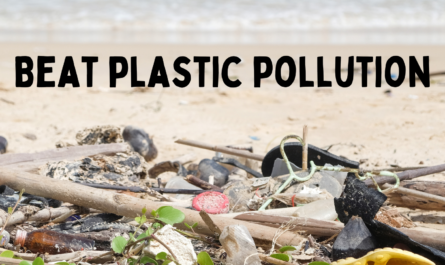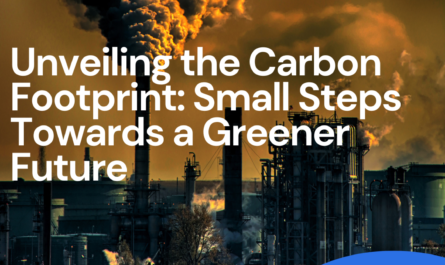
Irfan Haidri1, Muhammad Qasim1
1Department of Environmental Sciences, Government College University Faisalabad
Abstract
Amidst the global struggle with the consequences of climate change, the quest for effective solutions to reduce carbon dioxide (CO2) emissions and alleviate their impact has emerged as a top priority. Carbon storage and sequestration methods have surfaced as viable approaches to curtail the release of CO2 into the atmosphere. However, ensuring the long-term sustainability of these techniques necessitates a thorough assessment of their environmental impact.
In this blog post, we discussed multiple carbon sequestration and storage methods, while critically evaluating their implications on the environment.
Introduction
Carbon sequestration and storage play a vital role in mitigating climate change by effectively reducing atmospheric concentrations of carbon dioxide (CO2). As global efforts to address climate change intensify, it becomes imperative to thoroughly examine the environmental consequences associated with different carbon sequestration and storage methods (Karayannis et al., 2014). By gaining a comprehensive understanding of these implications, we can make informed decisions about the most effective and sustainable long-term solutions to combat climate change.
To ensure the effectiveness of carbon sequestration and storage systems, it is imperative to impose strong limitations, conduct thorough site selection, and maintain continuous monitoring (Aminu et al., 2017). Achieving a sustainable and economical solution demands the implementation of a comprehensive methodology that rigorously evaluates the trade-offs and synergies inherent in various carbon sequestration and storage methods.
By addressing the environmental consequences associated with these methods, we can seize the opportunity to optimize the benefits while minimizing potential hazards, ultimately paving the way for a healthier and more sustainable future for our planet (Olabi et al., 2022).
Afforestation and Reforestation
Globally, forests already absorb billions of tons of CO2 every year, resulting in an economic gain estimated to be worth hundreds of billions of dollars, far outweighing any other method of creating sinks (Olabi et al., 2022). However, due to concerns about the stability of forest carbon stocks, difficulties in assessing changes in stock, and the potential for negative environmental and socioeconomic consequences associated with large-scale replanting endeavors, the integration of forestry practices into climate strategies has been limited.
Trees have the ability to serve as a preventive step against climate change by sequestering carbon in tropical places where political will exists, while also providing economic, environmental, and sociocultural benefits. As a result, mitigating carbon emissions caused by deforestation and degradation has enormous potential, particularly in tropical areas (Olabi et al., 2022).
Ocean Carbon Sequestration
Strategies aiming to enhance the ocean’s capacity to absorb and store CO2, known as ocean carbon sequestration, involve the introduction of iron fertilizer into ocean waters to stimulate the growth of phytoplankton, which absorb CO2 through photosynthesis. Although these technologies show promise, concerns arise regarding potential unintended consequences, including the occurrence of harmful algal blooms and alterations to marine ecosystems, while also necessitating consideration of the long-term effects on ocean acidification and biodiversity (Olabi et al., 2022).
Carbon Capture and Storage
Reducing carbon emissions is a realistic option; however, given the numerous industrial applications of carbon dioxide as a valuable gas, its recovery becomes imperative for effective reduction of industrial emissions (Olabi et al., 2022). Notably, it aids in oil recovery, enhances coal bed methane extraction, and serves as a fundamental material for synthesizing carbonates and polymers.
The recovery of CO2 represents a highly sought-after solution across diverse sectors due to the adverse consequences of emissions and the potential for successful utilization of collected carbon dioxide. Consequently, the technologies and processes employed for CO2 recovery play a pivotal role in preserving the Earth’s temperature and fostering the growth of enterprises reliant on CO2 as a valuable raw resource (Cavaliere & Cavaliere, 2019).
Bioenergy with Carbon Capture and Storage
The technique known as ‘bioenergy with carbon capture and storage’ (BECCS) refers to the process of generating electricity from biomass while simultaneously capturing and storing the resulting CO2 emissions (Cavaliere & Cavaliere, 2019). Nevertheless, the sustainability and land usage aspects present challenges for BECCS. The potential of BECCS lies in its ability to achieve zero emissions.
However, the large-scale deployment of BECCS poses the risk of contributing to deforestation and the loss of biodiversity due to competition for land needed for food production or conservation purposes. Achieving a delicate balance between biomass production, land utilization, and environmental preservation is of utmost importance for the long-term viability and successful adoption of BECCS (Cavaliere & Cavaliere, 2019).
Post combustion carbon capture
As the name implies, post-combustion technology is an additional method incorporated into an existing industrial or power production unit. Its primary function is to properly separate the flue gases produced by the burning of fossil fuels into their constituent parts: nitrogen, water, carbon dioxide (CO2), and minor pollutants like as sulfur and nitrous oxides. This technology, which is used at the very end of the process, has built-in benefits for altering existing facilities without disrupting the plant’s core operations significantly. As a result, there has been a significant increase in research projects and interest in improving the development and use of post-combustion technologies (Cavaliere & Cavaliere, 2019).
Oxyfuel combustion
Oxyfuel combustion, also known as oxy-firing or oxy-combustion, is the most recent improvement of the three carbon capture processes. Its core tenet is to burn fossil fuels in an oxygen-rich environment rather than in ambient air (Cavaliere & Cavaliere, 2019). As a consequence, the flue gas stream contains more carbon dioxide (CO2), allowing for its extraction by condensation, and is mostly composed of carbon dioxide (CO2) and water.
However, in order to achieve the appropriate extraction rate, this method requires the use of either high temperatures or high pressure. Although this method is very effective at capturing CO2, its current commercial viability is jeopardized by the related energy penalty and associated costs. Because of the strong heat needed by oxygen-burning boilers and the potential of ambient air leakage, the efficacy of CO2 extraction is restricted (Cavaliere & Cavaliere, 2019).
Conclusion
By lowering CO2 emissions, carbon sequestration and storage techniques have the potential to mitigate the consequences of climate change. However, it is crucial to evaluate and take care of any potential environmental effects linked to these techniques to guarantee their long-term sustainability.
This requires a thorough consideration of issues such as land usage, biodiversity, water consumption, and energy needs. By comprehending and controlling these repercussions, we can put into practice effective measures that help create a more sustainable and resilient future.
References
Aminu, M. D., Nabavi, S. A., Rochelle, C. A., & Manovic, V. (2017). A review of developments in carbon dioxide storage. Applied Energy, 208, 1389–1419.
Cavaliere, P., & Cavaliere, P. (2019). Clean ironmaking and steelmaking processes: Efficient technologies for greenhouse emissions abatement. Springer.
Karayannis, V., Charalampides, G., & Lakioti, E. (2014). Socio-economic aspects of CCS technologies. Procedia Economics and Finance, 14, 295–302.
Olabi, A. G., Obaideen, K., Elsaid, K., Wilberforce, T., Sayed, E. T., Maghrabie, H. M., & Abdelkareem, M. A. (2022). Assessment of the pre-combustion carbon capture contribution into sustainable development goals SDGs using novel indicators. Renewable and Sustainable Energy Reviews, 153, 111710.
Check Other Schlorships:

